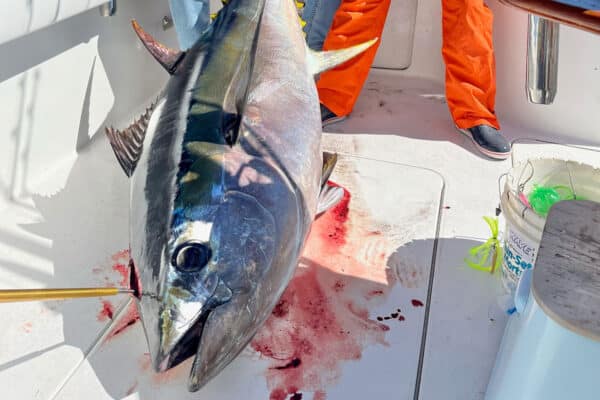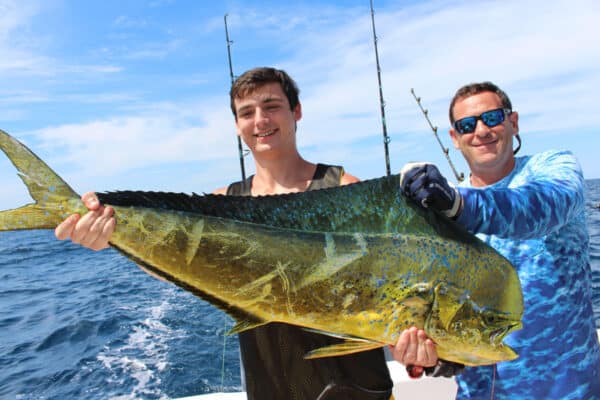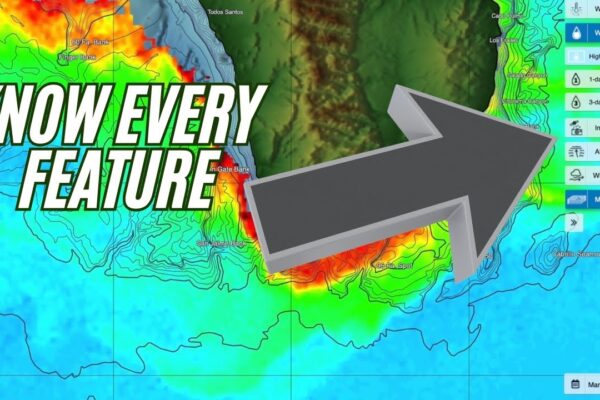
When wahoo are in town, there’s no better way to get a bait down.
Wahoo often hit baits trolled sub-surface, but if you don’t have offshore-capable downriggers or enjoy trolling with four or more pounds of lead on the line, how will you get that wiggling ballyhoo down deep? Rigging up a “poor man’s downrigger” will get the job done. As fall’s cool weather moves in and wahoo migrate down the coast this rig is one of the very best ways to get ‘em on the line.
How it Works
Like many ways of trolling a bait deep this incorporates a diving planer. Specifically, a ZWing or a Sea Striker #5 to #8. Unlike many ways of trolling deep baits this planer isn’t rigged inline, and won’t put a mega-pull on your rod either before or after a fish gets hooked. Instead, it’s rigged on a separate line.
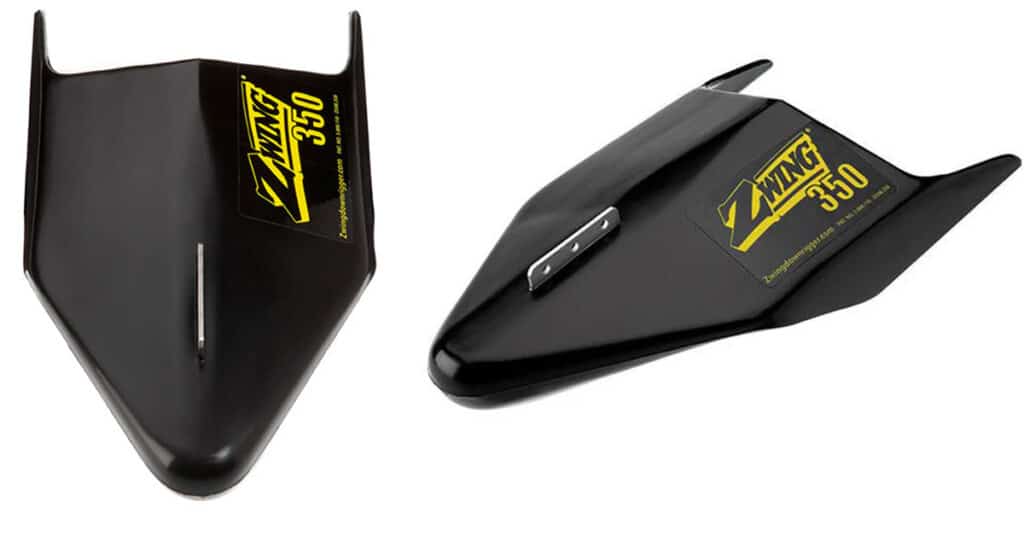
These planers will run 30’ to 50’ down at trolling speeds (exact depth will vary by speed, conditions, line length and more), and create immense pressure. So, they need some hefty tow-truck-style rigging. You’ll want 75’ to 100’ of 300- or 400-pound test, with a loop crimped into one end and a mega snap-swivel on the other. The snap swivel gets clipped to the planer, and when deployed the loop in the far end gets secured to a stern cleat.
Setting and retrieving the poor man’s downrigger is something we’ll get to in a moment—it’s a very specific process—but once it’s down there and you’re trolling along, you set baits on it in a similar (but different) fashion to a downrigger. First off, you’ll need a handful of snap swivels and rubber bands. Prep them by bending a rubber band through the swivel eye, then passing the swivel back through the rubber band so it’s secured to the eye. Then take your offering (purple, black, and red-skirted ballyhoo are the norm but similarly colored wobbling spoons work well too) and set it 25’ to 35’ behind the boat. Next, fold the rubber band over the fishing line, pass the swivel and clip through the end, and pull it tight. Now, you have the swivel clip dangling from the fishing line via the rubber band.
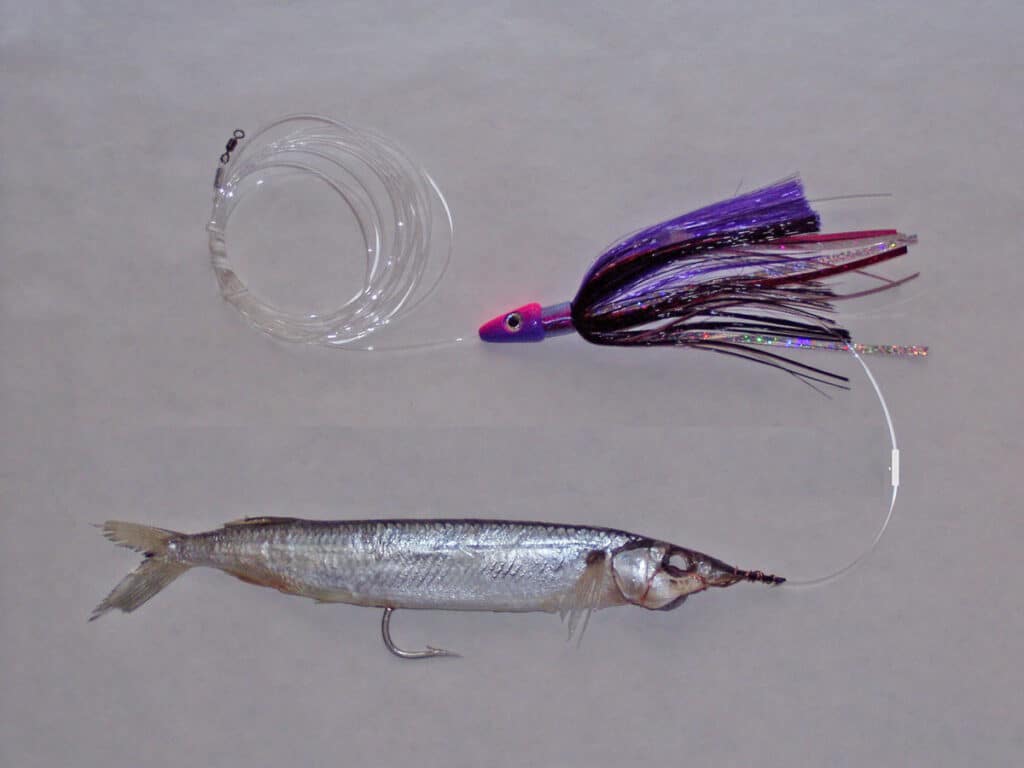
Now open the snap, pass it over the poor man downrigger line, and clip it shut. Set the rod in the closest rodholder, thumb the spool, and put the reel into freespool. As you release tension and let out line, water pressure against the bait will pull it down and the swivel will slide down the poor man’s downrigger line. A bow will form in the fishing line as you let it out, and will come mostly tight as you thumb the spool. When the snap swivel reaches the planer and stops, you’ll know because the bow will cease tightening and only grows bigger when additional line is let out.
When a wahoo strikes one of two things will happen: either it’ll find the hook and come tight, ripping the rubber band off the swivel, or it’ll bite the ballyhoo in half. If you hook up or the strike is hard enough to rip the rubber band, so be it. If the fish snaps the ballyhoo in half and misses the hook you’ll see the rod tip bob and know to check the bait. This is easy to miss, however, so it’s good to regularly reel up and check baits set on the poor man’s downrigger. Using lighter rubber bands means it rips free easier so you’re less likely to miss a strike, but it also means you’ll have more false alerts if the rubber band breaks merely from the water pressure. Also note that when you pull spoons or lures you’ll need up-sized or doubled rubber bands to account for the extra tension.
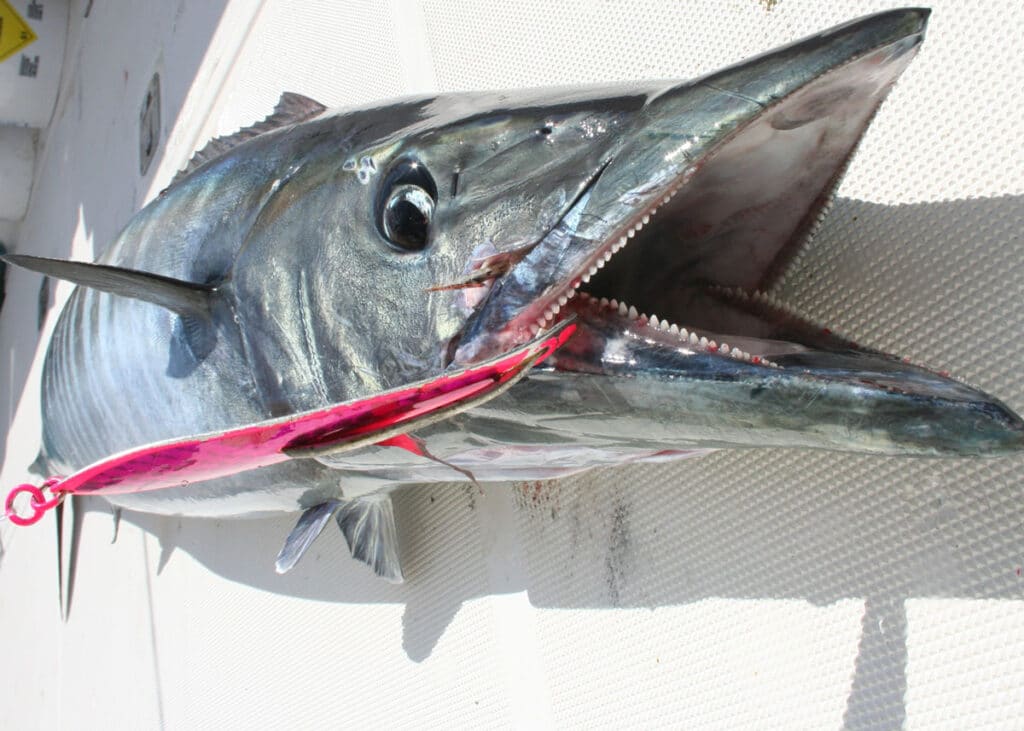
Either way, when a rubber band pops just grab another pre-prepped snap swivel, clip it around the poor man’s downrigger line, and redeploy your bait. At the end of the day you’ll get all your swivels back, stacked up on the planer, when you pull it.
Setting and Retrieving a Poor Man’s Downrigger
The tough part—and by tough we mean slightly dangerous—is setting and retrieving the planer. The immense amount of tension on this line can’t be overstated. It’s far too much for a person to hold by hand, and if the line wraps a finger or limb during deployment, serious injury will occur. If it wraps gear like an under-gunwale rodrack or a washdown fitting, it’s likely to rip it right out of the fiberglass.
Put on a good pair of heavy leather gloves before beginning the process, then unwind the line from the storage spool and feed it into in a five-gallon bucket so it’s neatly coiled. Next, secure the end loop to the stern cleat. Slow the boat to the absolute minimum idle speed. Have a second crewmember, also wearing heavy gloves, standing by to lend assistance if necessary. Then drop the planer overboard and feed out the line until it comes tight to the cleat. Be. Uber. Careful.
At the end of the day getting the planer back in is a serious chore. You’ll have to bring the boat to a stop, and even then, a husky angler in good shape will be winded by the time they haul it up. Don’t remove the loop from the cleat until the planer is inside the boat and feed the line back into the five-gallon bucket as neatly as possible so later you can roll it back onto the storage spool.
Fighting Fish with the Poor Man’s Downrigger
You’ll have days where the poor man’s downrigger line catches multiple wahoo and baits on the surface go untouched. The rig is an absolute killer, and when wahoo are the dedicated target running one is likely to boost your catch rate three or fourfold. But, as you’ve probably guessed by now, there is one big downside to pulling a poor man’s downrigger: when you have a fish on, that line will always be in the water. With an average wahoo this usually isn’t a big deal, as you can keep the boat in forward gear at all times and land the fish on the far side of the boat. Mahi and school-size tuna can be handled in the same fashion, though on occasion even a 50-pounder yellowfin will have the muscle and the mettle to dart the wrong way at the wrong time and you’ll have to work around the poor man’s downrigger line. However, if you accidentally hook into a completely uncontrollable marlin or tuna while a poor man’s downrigger is deployed, things just became a lot more complicated.
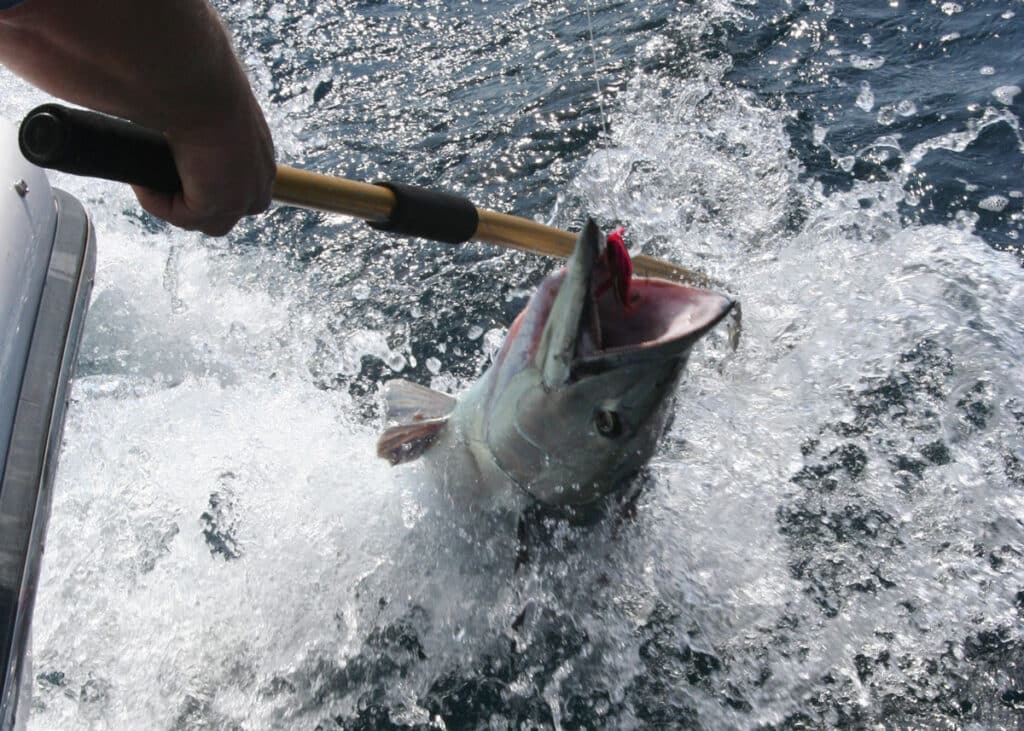
Pulling the rig takes several minutes, and several minutes in neutral with a hot monster pelagic on the line can be disastrous. Similarly, bringing a hot monster pelagic up to the boat with a taunt 300-pound test line trailing the transom can be disastrous. So, what do you do? This will be a judgement call depending on the fish’s attitude and your confidence level. Good luck!

